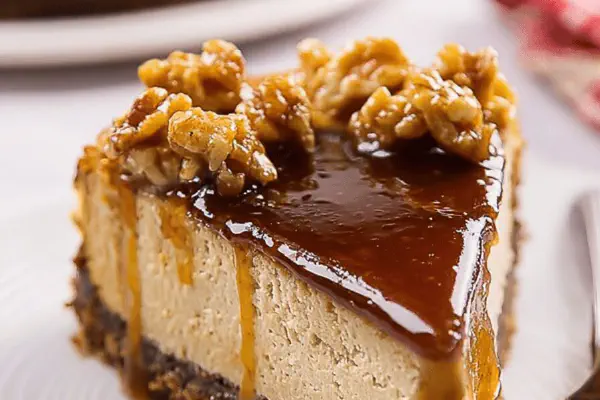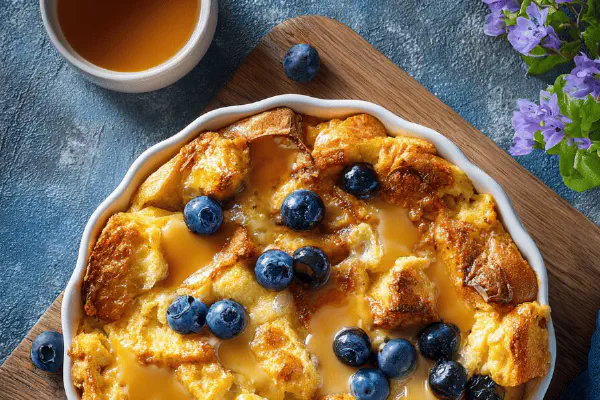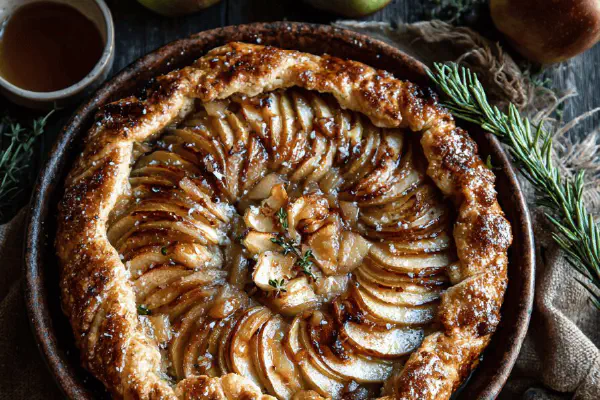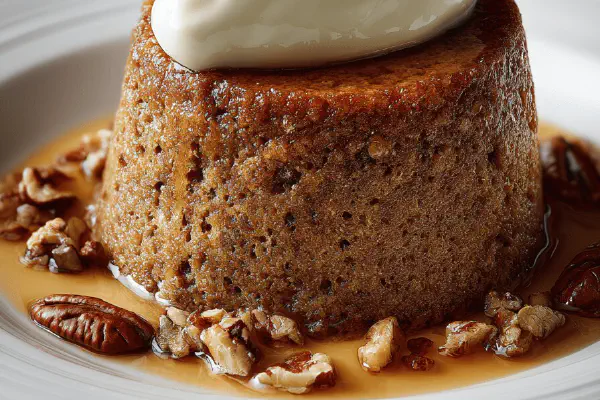Maple Glazed Upside-Down Apple Cake

By Emma
Certified Culinary Professional
Ingredients
- 4 medium Granny Smith apples peeled
- 125 ml pure maple syrup
- 450 ml all purpose flour
- 10 ml baking powder
- 5 ml ground cardamom
- 3 ml salt
- 180 ml unsalted butter softened
- 320 ml packed brown sugar
- 2 large free-range eggs
- 200 ml apple cider
- 60 ml finely chopped walnuts (optional twist)
- 1 tsp vanilla extract (replaces cinnamon)
About the ingredients
Method
Preparing Apples
- Set oven rack mid-level and preheat to 175 C (350 F). Butter a 2-liter souffle dish. Peel and cube one apple; set aside. Slice remaining apples very thinly on a mandoline; keep star centers for presentation.
- Arrange thin apple slices in overlapping concentric circles covering bottom of the dish. Press gently so slices form a solid apple carpet that won’t let batter seep through. Pour maple syrup evenly over apples for glazing.
Mixing Dry and Wet
- Whisk together flour, baking powder, cardamom, and salt in a bowl. The cardamom adds unexpected warmth instead of cinnamon’s sharpness; try it.
- In another large bowl, beat softened butter with brown sugar until fluffy and paler in color. This beats air into the batter, crucial for a tender crumb.
- Add eggs one at a time, mixing well after each. Fold in vanilla extract now to integrate fragrance.
Combining Batter
- On low speed, alternate mixing in dry ingredients and apple cider, starting and ending with flour mixture. Stop when just combined—overmixing makes cake tough.
- Gently fold in apple cubes and chopped walnuts for texture and a nutty contrast.
Baking
- Pour batter over apple bed in dish. Level top with spatula but don’t press down hard—the apples need room to shine through.
- Bake about 1 hour 25 minutes. Watch for bubbling edges and golden top. Insert toothpick or skewer near center; if it comes out clean or with moist crumbs, done.
Cooling and Serving
- Let cake cool about 20 minutes in dish to settle and make flipping easier. Run thin knife around edges before inverting onto serving plate. The glossy apple layer should gleam on top.
- Serve warm or room temp. Bonus: dollop with spiced whipped cream or coconut yogurt mixed with a drizzle of maple syrup.
- Store leftovers wrapped, they improve after a day allowing flavors to deepen.
Cooking tips
Chef's notes
- 💡 Butter and sugar beaten long enough to turn pale and fluffy means trapped air that lifts batter—skip or rush this, cake gets dense and heavy. Watch texture closely not just color. Use room temp butter, small bowl for better control.
- 💡 Thin apple slices need to be paper-thin. Gaps mean batter seeps. Press gently but don’t squash, or apples steam not caramelize. Overlapping concentric circles create a tight carpet that crisps up with maple syrup glaze—liquid pooling is your enemy.
- 💡 Alternate dry flour mix and apple cider on low speed. Start and end with dry ingredients. Overmix and gluten tightens, tough crumb follows. Fold chunks of cubed apple and walnuts very gently after; folding preserves tender texture and nutty contrast.
- 💡 Cooling time crucial: too hot, cake tears when flipped; too cold, maple glaze sticks to dish. About 20 minutes rest after baking; use thin knife to separate edges carefully before inversion. Patience here saves shape and glossy top layer.
- 💡 Cardamom replaces cinnamon for less shouty spice but adds warmth. Vanilla folded early with eggs. Swapping apple cider for juice deepens flavor and acidity helps with rise. Walnuts optional but add crunch and cut sweetness. Always sift or whisk flour to avoid lumps.
Common questions
Can I substitute apples?
Cortland swaps tartness for sweetness; Granny Smith keeps balance. If no apples, no close substitute—texture and moisture different. Applesauce messes up texture here. Thin slices crucial not just cubes alone.
What if batter seems too wet?
Rest batter few minutes to bind. If too runny, flour measuring often culprit—spoon and level, not scoop. Adding too much liquid toughens cake. You want batter thick enough to hold but not dry.
How to prevent sticking?
Butter souffle dish thoroughly. Run thin knife around edges after baking. Maple glaze sticky, pressing batter down seals apples but too much pressure traps moisture, steam makes sog. Proper buttering key.
Best way to store leftovers?
Wrapped warm or cooled, fridge or room temp both fine for 1-2 days. Reheat slightly to revive glaze crust, microwave or oven works. Freeze in airtight container if longer storing but glaze texture loses shine.



